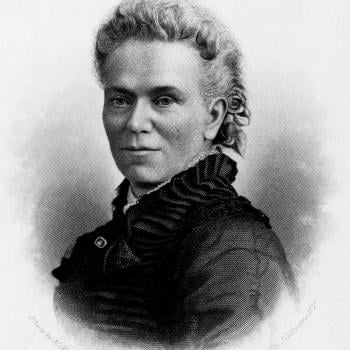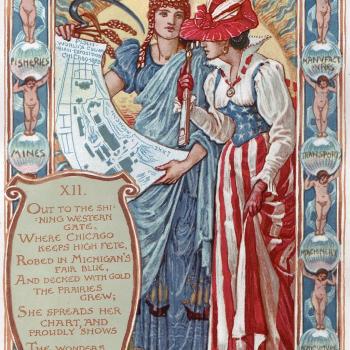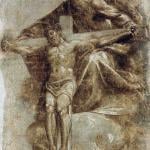The Old Testament book of Zechariah challenges a lot of conventional assumptions about the development of Second Temple Judaism, and its chronology.
Conventionally, historians of Jewish thought trace a series of very significant trends that emerged from the fifth century BC onwards, and which reached fruition only in the second century BC. Most strikingly, these included a steadily expanding view of the heavenly hierarchy and the role of angels; a growing number of celestial intermediary figures between God and humanity; the development of apocalyptic; and a greater sense of cosmic evil as an independent force confronting the divine order. All these ideas are strongly in view in the Book of Daniel, from the 160s BC, and in many texts of the Dead Sea Scrolls in the following decades.
The core of Zechariah, the first eight chapters, is fairly solidly dated to the end of the sixth century BC, so it is not surprising that we do not yet find that whole panoply of revolutionary spiritual ideas in any kind of developed form. We do, though, find the ideas touched on remarkably often, and in ways that would heavily influence later authors through early Christian times. Moreover, all the relevant passages are in this early section of Zechariah, not the later Deutero-Zechariah section, which is so difficult to date with any confidence.
I have already discussed the role of angels in Zechariah, as intermediaries between God and the prophet – which is supposedly a characteristic feature that distinguishes classical prophecy from the apocalyptic literature of two or three centuries later.
As Maxwell Davidson notes, “The book of Zechariah is notable in the OT for the importance of angels in it, and in this respect it is related to the Enochic apocalyptic writings. The intercessory role of angels was a doctrine that would come to full flower in the apocalyptic literature of the later Second Temple period” (Angels at Qumran, 1992). This is one of several examples that make us think of the likely chronological overlap with the strange emerging world that we see reflected in 1 Enoch (third-second century BC), an intriguing parallel that some scholars have explored. Enoch, too, straddles the boundary between prophecy and apocalyptic, not to mention other genres.
I don’t attach too much significance to raw numbers, but Zechariah accounts for an impressive 20 of the 315 occurrences of the word “angel” in the Revised Standard translation of the Bible, including both Old and New Testaments, and (significantly) the Deuterocanonical books. A crude general rule suggests that you can date a Biblical book by the frequency of its references to angels, with angels proliferating as time goes on. The Book of Tobit (third century BC?) has nineteen angelic references, and angels of course abound in the New Testament. The density of angelic references in Zechariah (c.520 BC) stands out as exceptional. They are differentiated from their later counterparts by the lack of personal names, such as Michael, Raphael or Gabriel, but nevertheless, the angels are there, and in some numbers.
Tigchelaar makes an interesting suggestion about how we should interpret these angels. Yes, they are figures at the heavenly court, but Second Temple Judaism also developed the idea that particular peoples and nations had their own distinctive angels, who were in charge of those communities. We see that idea in 1 Enoch and Daniel. For Tigchelaar, the angel who spoke with Zechariah was already “in a sense the angel of Judah.”
Equally out of their time are Zechariah’s references to evil forces. No, the book has nothing like the Satanic or diabolical figures who so often appear in later apocalypses, nor is there any hint of cosmic evil, nor of dark angels. What it does have, though, is a very rare Old Testament reference to Satan.
As I have described elsewhere, the Satanic image of Satan is rarely expressed in the Old Testament, but becomes common by the later Second Temple period, under a variety of names and titles. Angelic figures are particularly common in 1 Enoch. In Zechariah’s chapter three, he sees “Joshua the high priest standing before the angel of the Lord, and Satan standing at his right hand to accuse him.” To put that in context, the Book of Job mentions the name Satan eleven times, but otherwise it occurs only once in the whole Old Testament, in 1 Chronicles 21. The name (and the idea) then of course proliferates in the New Testament.
Zechariah’s Satan is still definitely in the older mode, presumably as a servant of God who accuses, playing the role of a kind of public prosecutor. In this, he exactly follows the image of Job and 2 Chronicles, and he is not yet the independent overlord of evil portrayed in Jesus’s time. Even in Zechariah, though, we get a sense of Satan as being in conflict with God, who rebukes him for his acts, before an angel intervenes to vindicate the accused man.
I try to avoid endlessly repeating the phrase “One odd feature of Zechariah…” but it is hard to resist it. In his chapter five, the prophet sees an ephah, a large jar or basket, which contains a woman identified as Wickedness. The angel explains that it is being taken to Shinar, where a house or temple will be prepared for it. Shinar is the Hebrew term for Babylonia, which is the word used in the Septuagint version of this passage. Clearly, in the context, Zechariah is not representing the woman as an individual or an evil deity, but rather a symbol of evil and, presumably, idolatry. (Tigchelaar calls her “The Goddess in a Jar”). She is female, presumably, because the Hebrew word for Wickedness is feminine. Even so, what we have here, perhaps, is a first draft of Revelation’s Whore of Babylon.
I also draw two other points from the Greek Septuagint translation of these passages, which was widely read by later Jews and Christians. The Septuagint form of the words in which Satan is put in his place, “The Lord rebuke you!” is echoed in the New Testament, and in a similar context. In the Epistle of Jude, Michael uses these very words towards the Devil, in their dispute over Moses’s body. It is likely that Jude is taking the phrase from some other work, such as the Assumption of Moses, but again, we see Zechariah creating the vocabulary for later writings and pseudepigrapha, especially in the context of angels and devils.
In the Basket story, the Septuagint translates the word given as Wickedness as anomia, Lawlessness, an uncommon word in the Bible. It does however recur in the New Testament, in 2 Thessalonians, where it again refers to an apocalyptic figure. This is “the man of lawlessness, the son of perdition,” who is commonly seen as the Antichrist.
Although it is a pre-Second Temple work, Zechariah already contains so many of the themes that would dominate Second Temple Judaism, and early Christianity. The whole story also raises intriguing questions about just where these ideas are developing and percolating during the fifth and fourth centuries BC, after Zechariah and before the emergence of the Enochic literature. What are we not seeing?
E. J. C. Tigchelaar, Prophets of Old and the Day of the End (Oudtestamentische Studien, 35; Leiden: Brill, 1996).















